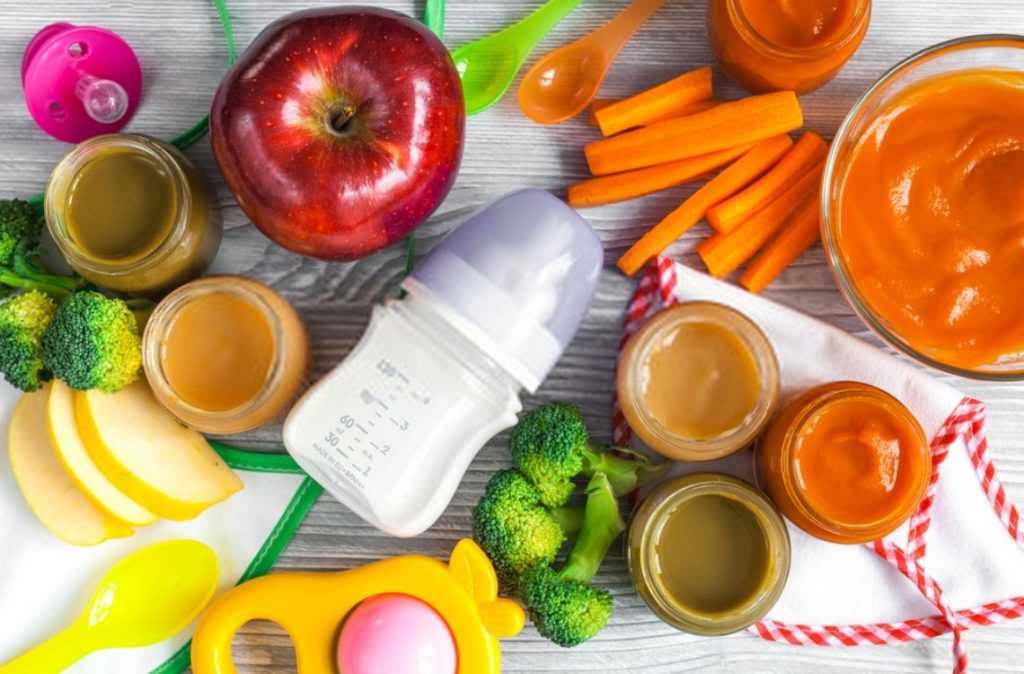Feeding your baby is never an easy thing. Your child will achieve some pretty amazing milestones during their first three years and their transition from a suckling bub to ravenous toddler is just one of the most fascinating and messy parts of their development journey.
Wondering when to start them on solids? How long it will be until they can feed themselves and when they’ll stop making such a mess in the process? Here are the answers to your questions.
Just remember, while these ‘milestones’ are a useful guide, babies develop in the same order but at completely different rates. The time frames here are a general reference only.
If you have any concerns about your baby’s development, kindly talk to a health professional.
0-3 months
Your baby will receive their nutrition exclusively from breast milk or formula, or a combination of the two.
Feeding milestones:
- Has a natural ability to root, suck, swallow and gag.
- From birth, your baby’s reflexes will allow him/her to turn her head to suckle when you touch her cheek.
3-6 months
Breast milk or formula still provides all the nutrition your baby needs, but you’ll begin to notice signs they are getting ready to try solids.
Feeding milestones:
- Ability to chew by five to six months.
- Can sit upright in a highchair.
- Is able to grab at a piece of food with the palm of their hand, curl their fingers around it and move it in the general direction of their mouth.
6-9 months
These are the exciting months when solids are introduced. Start out with flavours such as vegetable purees, mashed banana and cooked and mashed apple or pear.
Feeding milestones:
- By six months old, they can hold objects and take them to their mouth.
- Learning to hold and drink from a cup.
- By seven months old, they can hold a spoon, but can’t purposefully use it.
- By seven months old is beginning to eat a solid food diet.
- Can close mouth around spoon and use tongue to move food around in mouth.
9-12 months
At this stage, your baby should be able to cope with coarsely mashed foods. They’ll also enjoy finger foods such as pieces of soft fruit, cooked vegetables and toast, all of which will encourage self-feeding.
Try feeding them:
- ground up meats and chicken.
- cereals such as whole rice, couscous, and pasta (refrain from these if you have a family history of wheat-based allergies).
- yogurt.
- a little cow’s milk added to cereal or food such as custard.
Feeding milestones:
- By 12 months they can pick up a small object such as a grape by pincering with thumb and forefinger.
- Points to or reaches for food when hungry.
- Uses lips to get food off spoon and swallows with lips closed.
12-18 months
At 12 months old, you can introduce cow’s milk to your baby’s diet. At this stage they’ll be able to eat coarsely textured foods, including meat, and will be moving towards a family diet.
Feeding milestones:
- Bites food well.
- Eats coarsely chopped foods, including meats and raw vegetables.
- Starts to chew with lips closed.
- Can drink from a cup without dribbling.
- Can feed themselves using a spoon, dropping some food off the spoon.
18-24 months
A well-balanced daily diet for you toddler should include the following:
- Vegetables – two to four serves.
- Fruit – one to two serves.
- Dairy foods (milk, cheese, yogurt) – three serves.
- Meat, eggs, fish, lentils, etc. – one to two small serves.
- Breads, cereals, rice and pasta – three to five serves.
- Eggs – limit to one a day.
Feeding milestones:
- Chews with jaw movements that go round and round, as well as up/down and side to side.
- Scoops foods with a spoon, with some spills.
- Starts to stab at foods with a fork and get them to their mouth.
2-3 years
Toddlers can become very fussy about their food around this time. They develop distinctive likes and dislikes that can try the patience of any parent.
If your child refuses dinner, try these tips:
- Avoid cordials and too much fruit juice as these are high in sugar and take away the appetite for other foods.
- Don’t serve too much food – it’s better for them to ask for more if still hungry than have them sit with a mountain of uneaten food on their plate.
- Don’t use dessert as a bribe to eat the rest of the meal – it rarely works and can often lead to more resistance over dinner.
- If your toddler rejects everything you put on their plate, try placing all the meal’s food on communal plates in the centre of the table and encourage them to serve themselves.
Feeding milestones:
- Feeds themselves well with a spoon and fork.
- Can wipe their own mouth and hands with a napkin or cloth.
- Is starting to serve themselves at the table with some spills.
- Can pour liquids into their cup from a small container.
Every nutrition that you provide to your baby from the day they start to grow in your belly is very important. Everything should be well prepared and balanced according to their growth. It is a mother’s biggest responsibility to give their baby food with enough quantity and quality.
Stock up on healthy baby foods from Motherhood.com.my.
